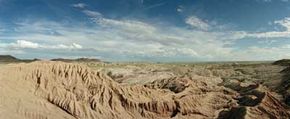The Purpose of Clouds
Clouds have many effects on our climate besides simply hurling down hail and covering us in snow. For example, they serve as barriers for heat moving both in and out of the Earth's atmosphere. Researchers estimate that clouds' current net effect on our planet's atmosphere is to cool it slightly. This is, however, something researchers are examining closely, as part of efforts to gather information on possible climate change.
Clouds generally affect the temperature in two ways. Over the surface of the planet, clouds reflect about 20 percent of the incoming heat back into space [source: Tarbuck]. Clouds, water vapor and other atmospheric gasses also absorb about 20 percent of this incoming solar radiation. Low-level clouds reflect the greatest amount of heat, which is why we enjoy cooler temperatures during a cloudy day. Conversely, a cloudy night is warmer than a cloudless night because clouds also create a blanketing effect. Clouds partially absorb outgoing heat (such as the heat released in the evenings, as the ground cools) and reradiate a portion of that heat back towards the Earth's surface. High-level clouds typically absorb this outgoing heat.
Advertisement
Clouds regularly help shift dust, bacteria and other particles throughout the planet's surface. Clouds carry dust at a rate much faster than you might think. One estimate puts the amount of dust moving from Africa to a portion of the Amazon basin in South America at about 13 million tons annually [source: Phillips].
Unfortunately, too much dust in the atmosphere can decrease the amount of rain that falls on a region. This is thought to be due to the fact that when raindrops form by lots of nucleators, these drops grow smaller and are therefore less prone to fall. So if a region has a lot of dust in the air, it likely will receive less rain. This can contribute to desertification (where a local climate slowly changes to desert) and is one of the factors scientists believe is behind the landscape changes around central Africa.
Think we're done? We still haven't talked about some of the most interesting clouds of all, so go to the next page to learn all about them.
